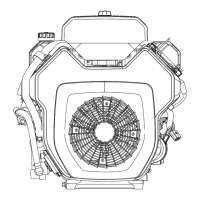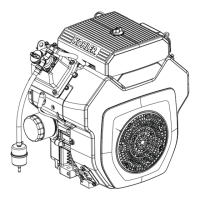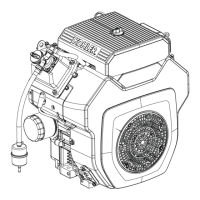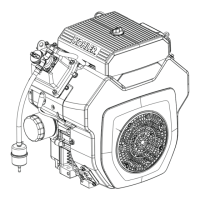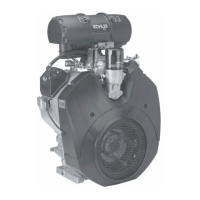7324 690 06 Rev. P KohlerEngines.com
Electrical System
A Oil Pressure Switch B
Green (Oil Sentry
™
Pulse Signal Lead)
C
Black (Ground) Intake
Manifold Mounting
Screw
D Black
E White F Red G Spark Plug(s) H Black (Ground)
I Red (B+) J White (DSAI Kill) K Module Screw L
Flywheel Stator
Assembly
M DSAI Module N
White (AC Charging
Leads)
O
Rectifi er-Regulator
Connector
P Rectifi er-Regulator
Q Violet (B+ Lead) R Starter Assembly S
Oil Sentry
™
Pulse
Signal
T
Alternate Ignition
Pulse Signal (–)
U Fuse V Starter Solenoid Tang W Starter Solenoid Stud X Blue
Y
Accessory Terminal
(+)
Z Yellow AA Red (DSAI Power) AB White (DSAI Kill)
AC Carburetor AD Solenoid Lead AE Ground AF
Intake Manifold
Screw
AG Black (Ground) AH
Oil Sentry
™
Panel
Light/Remote Light
AI Oil Sentry
™
Light AJ Connector
AK Magneto AL Key Switch AM Accessory AN Battery
AO Starter AP
Key Switch Ground
(Black)
AQ Rectifi er AR Blue/Red
AS Battery Positive AT Battery Negative AU
Customer Supplied
Relay Cranking
AV Relay Stud
Digital Spark Advance Ignition (DSAI) System
This system uses a digital microprocessor which is located in ignition modules. Ignition timing varies depending upon
engine speed with this system. There are 2 inductive-style ignition modules that control ignition timing based on
engine RPM. A typical DSAI application consists of:
● 1 magnet assembly, which is permanently affi xed to fl ywheel.
● 2 inductive, 12-volt ignition modules, which mount on engine crankcase.
● 1 12-volt battery, which supplies current to ignition modules.
● 1 kill switch (or key switch) which grounds spark advance module to stop engine.
● 2 spark plugs.
DSAI Ignition Systems Tests
NOTE: Ignition tester must be used to test ignition on these engines. Use of any other tester can result in inaccurate
fi ndings. Battery on unit must be fully charged and properly connected before performing tests (a battery that
is hooked up or charged backward will crank engine but it won’t have spark). Be certain drive is in neutral and
all external loads are disconnected.
Special Tools Required:
● Hand tachometer.
● Ignition tester.
● Multi-meter (digital).
Specifi cations Required:
● 0.76 mm (0.030 in.).
Test for Spark
NOTE: If 2 testers are available, testing can be performed simultaneously for both cylinders. However, if only 1 tester
is available, 2 individual tests must be performed. Side not being tested must have spark plug lead connected
or grounded. Do not crank engine or perform tests with 1 spark plug lead disconnected and not grounded, or
permanent system damage may occur.
1. With engine stopped, disconnect 1 spark plug lead. Connect spark plug lead to post terminal of spark tester and
attach tester clip to a good engine ground.
2. Crank engine over, establishing a minimum of 350-450 RPM, and observe tester(s) for spark.
3. Repeat spark test on opposite cylinder if cylinders are being tested individually.
4. Turn key switch to ON position and check for 12 volts at center/power (red) lead terminal of DSAI module.

